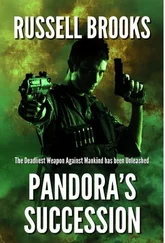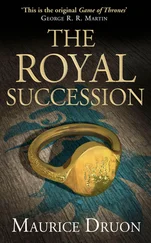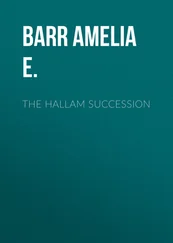William Tyree - Line of Succession
Здесь есть возможность читать онлайн «William Tyree - Line of Succession» весь текст электронной книги совершенно бесплатно (целиком полную версию без сокращений). В некоторых случаях можно слушать аудио, скачать через торрент в формате fb2 и присутствует краткое содержание. Год выпуска: 2010, Издательство: Massive Publishing, Жанр: Триллер, на английском языке. Описание произведения, (предисловие) а так же отзывы посетителей доступны на портале библиотеки ЛибКат.
- Название:Line of Succession
- Автор:
- Издательство:Massive Publishing
- Жанр:
- Год:2010
- ISBN:нет данных
- Рейтинг книги:3 / 5. Голосов: 1
-
Избранное:Добавить в избранное
- Отзывы:
-
Ваша оценка:
- 60
- 1
- 2
- 3
- 4
- 5
Line of Succession: краткое содержание, описание и аннотация
Предлагаем к чтению аннотацию, описание, краткое содержание или предисловие (зависит от того, что написал сам автор книги «Line of Succession»). Если вы не нашли необходимую информацию о книге — напишите в комментариях, мы постараемся отыскать её.
Line of Succession — читать онлайн бесплатно полную книгу (весь текст) целиком
Ниже представлен текст книги, разбитый по страницам. Система сохранения места последней прочитанной страницы, позволяет с удобством читать онлайн бесплатно книгу «Line of Succession», без необходимости каждый раз заново искать на чём Вы остановились. Поставьте закладку, и сможете в любой момент перейти на страницу, на которой закончили чтение.
Интервал:
Закладка:
On the carrier’s bridge, some 50 feet above the flight deck, Captain White raised his binoculars to take a last look at the Israeli coast’s crumbling majesty. It wouldn’t be long until black smoke rising up from the cities fully obscured his view. Nearby, a Hebrew translator sat with headphones on, listening to Israeli military air traffic controllers as they coordinated the counterattack.
The translator took off his headphones. “Sir,” he said, scratching his neck, “the Israeli planes have been ordered to abandon ground targets. They’re focusing on the enemy MIGs attacking Haifa.”
The Captain heard the Ensign’s boots come up behind him.
“Captain,” he said, “The pilots asked me again — ”
“No,” the Captain said. “I already went over the Admiral’s head. What part of penalty of death don’t you understand?”
Just as soon as he said it, the phone chirped the pre-programmed ring tone — four bars of Wagner’s Flying Dutchman concerto — of the Admiral of the Navy. Out of habit, the Captain’s heels snapped together and his posture straightened as he answered.
“Yes Admiral,” he said into the receiver. He listened for a moment as the Admiral chewed him out for going over his head and contacting the Chairman directly. Then he said again, “Yes Admiral,” and hung up.
“Sir?” the Ensign said.
Captain White kept his gaze on the erupting coastline. “We’re moving out to international waters. Tell the crew.”
The Ensign was aghast. He flinched as a series of cluster bombs fell on a coastal village that, from this distance, sounded like a string of erupting firecrackers. “Sir,” he said, “I got relatives over there. All my neighbors back in L.A. got people over there.”
Being privy to far more intelligence than his men, the Captain knew the situation was far more dire than the Ensign even knew. Iranians and Syrians were attacking from the northeastern front. Palestinians were coming in from the east and south. Hezbollah agents were everywhere. Without U.S. support, he gave the nation of Israel three days max.
Washington D.C.
2:45 a.m.
Speers surfaced from the tunnels underneath Arlington Station like some artful rodent that kept cheating death. There was no activity in the station. The last trains had stopped running hours earlier under the disquieting spell of martial law. The Chief stole across the vacant platform, hopped the turnstile and made his way, slowly, silently, up the motionless escalator. As he crept out onto Memorial Drive, he found the humidity absolutely overpowering. The night air felt textured and heavy as it flowed into his body. But there were no Ulysses patrols in sight, and that was a relief. The streets were empty of pedestrians or cars, and there was virtually no noise except for the nagging buzz of mosquitoes flitting around his head.
Up Memorial Drive, he eyed the rolling green hills of the Arlington Cemetery. Unending rows of white tombstones glowed brilliantly under soft yellow lights. He looked over his shoulder as he walked up the gentle slope. The Arlington hillsides had a sweeping view of the Capitol. A mile across the Potomac River was the National Mall, a majestic two-mile stretch of green space that hosted the Lincoln Memorial, the Korean, Vietnam and World War II memorials, the Reflecting Pool, the Washington Monument, and at the far end, Congress itself. Across the Potomac and to the southeast was the massive Pentagon.
But he was not here to admire the view. He was here to hide. Out of respect for the nation’s dead, Arlington Cemetery was one of the only places in the D.C. area without NSA-controlled surveillance cameras. And as Speers had expected, the guard booths at the cemetery gates were empty. The Army MPs who had once guarded Arlington had long ago been replaced by civilian security guards who were no doubt sequestered at home under martial law.
Speers scaled the eight-foot cemetery gates with some difficulty, huffing and puffing as he lifted himself high enough to drape his right leg over the top. The leg of his pants caught at the hemline, tearing as he pulled the rest of his body onto the other side. He crossed himself as he walked past the first rows of identical white tombstones in Section 26.
Over the past three years, Speers had taken it upon himself to know every nook and cranny of the cemetery. Not because he was morbid, but rather because he had, after the Santa Monica bombing, been tasked with overseeing the Administration’s disaster evacuation planning.
He had first requested each previous administration’s disaster preparedness plans from the National Archives. He’d expected five or ten records, beginning with the Cold War administrations. Instead he received thirty-seven such plans, dating back to 1811, when the primary national threats were considered to be British invasion, slave uprisings, plague and fire. Of those, only the British invasion had actually come to pass, during the War of 1812. As Speers learned, the hills where Arlington Cemetery now stood had often figured big in those plans.
Before Arlington had been formally turned into a National Cemetery, the hill had been the strategic highpoint of the Capitol and the Potomac region. It had been settled by a long line of military men descending directly from George Washington. Arlington House, the stately Greek-revival mansion on the cemetery’s hilltop, had been built by President George Washington’s grandson, George Washington Parke Custis. Custis had positioned himself as a pacifist, only to find himself firing cannons at the British before they eventually swarmed into the Capitol in 1814. Two decades later, in 1831, Custis’ daughter married General Robert E. Lee, who lived in the home for thirty-years before the outbreak of the Civil War.
During his research, Speers had seen copies of letters from Union spies claiming that Lee had designs on defending Arlington House at the outset of the Civil War. Lee apparently envisioned a massive battle in northern Virginia, knowing the steep hill would have been an excellent firing position for his cannons upon the Union Army. Lee set his staff to building escape tunnels below the wine cellar in the event that they were overrun. It was soon evident that the Confederate Army would not be able to mount a defensive posture in time, and as Union forces began gathering in Washington, Lee resigned his post and set off for Richmond, where he assumed command of the Confederate Army. Upon Lee’s departure, Lincoln directed General George McClellan to inhabit Arlington House with a Federal staff, setting up cannon positions on the hillsides overlooking Virginia. Three years later, in 1864, Union soldiers had been buried just outside Arlington House’s front door. Speers tried to imagine Lee’s anguish upon learning that enemy dead were buried in his own front yard.
In 1952, General Eisenhower’s administration, fearing a Soviet attack, devised the elaborate labyrinth of subterranean tunnels beneath the Capitol, including one from beneath the West Wing to an underwater port in the Potomac, where a Polaris submarine manned by the Naval Administrative Unit would whisk Eisenhower out to the relative safety of the Atlantic and chart a course for London. In the event that the Potomac might be blockaded by Soviet warships, the CIA’s Plan B involved burrowing a tunnel beneath the Lincoln Memorial, underneath the Potomac, and linking to one of General Lee’s original tunnels underneath Arlington House, where Eisenhower could theoretically escape into the Virginian suburbs. Speers had himself written Lee’s tunnel system into the current administration’s evacuation plans, receiving in return a budget of two hundred thousand dollars to install the new retina scanners on each of the twenty-two tunnel entrances in D.C., Arlington and Silver Springs.
Читать дальшеИнтервал:
Закладка:
Похожие книги на «Line of Succession»
Представляем Вашему вниманию похожие книги на «Line of Succession» списком для выбора. Мы отобрали схожую по названию и смыслу литературу в надежде предоставить читателям больше вариантов отыскать новые, интересные, ещё непрочитанные произведения.
Обсуждение, отзывы о книге «Line of Succession» и просто собственные мнения читателей. Оставьте ваши комментарии, напишите, что Вы думаете о произведении, его смысле или главных героях. Укажите что конкретно понравилось, а что нет, и почему Вы так считаете.












